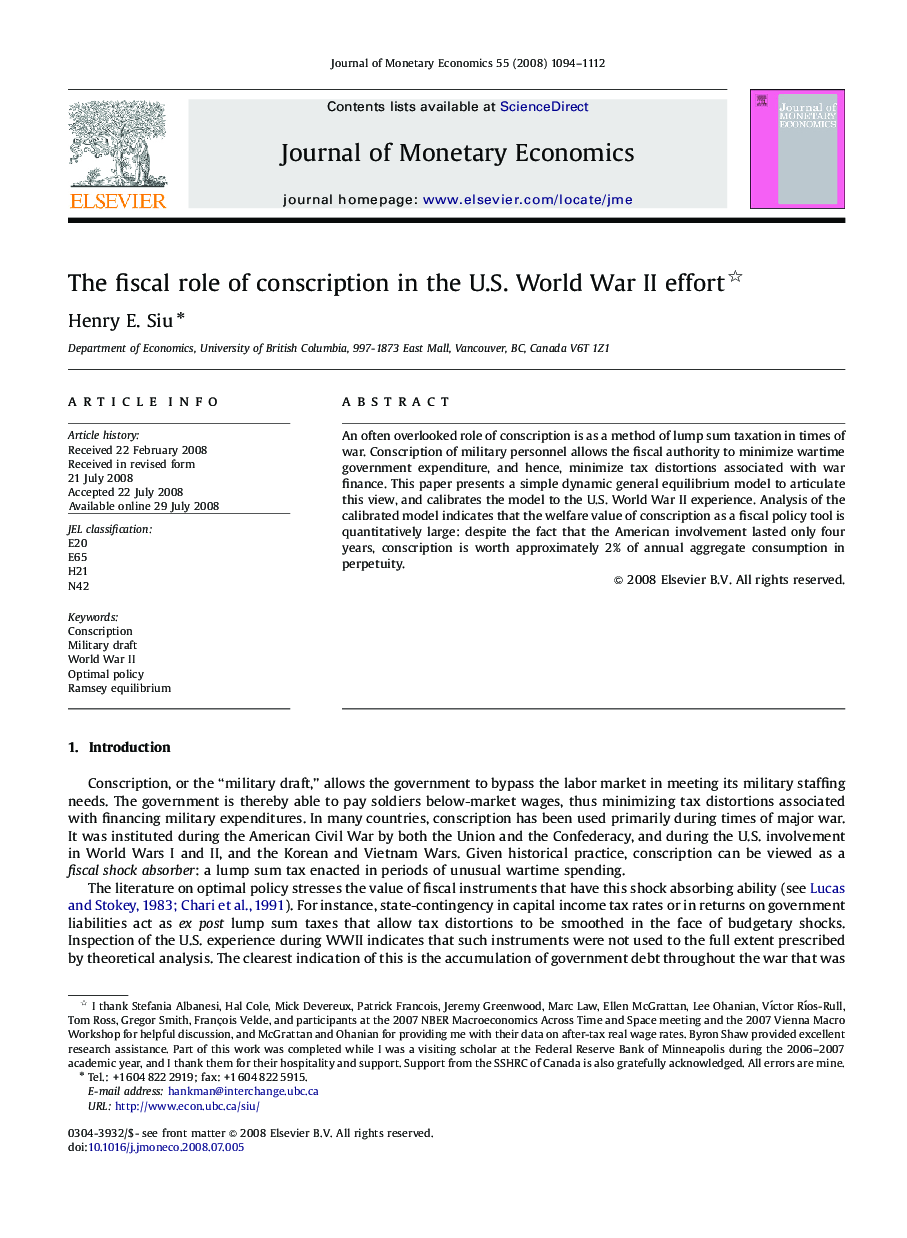| Article ID | Journal | Published Year | Pages | File Type |
|---|---|---|---|---|
| 967921 | Journal of Monetary Economics | 2008 | 19 Pages |
Abstract
An often overlooked role of conscription is as a method of lump sum taxation in times of war. Conscription of military personnel allows the fiscal authority to minimize wartime government expenditure, and hence, minimize tax distortions associated with war finance. This paper presents a simple dynamic general equilibrium model to articulate this view, and calibrates the model to the U.S. World War II experience. Analysis of the calibrated model indicates that the welfare value of conscription as a fiscal policy tool is quantitatively large: despite the fact that the American involvement lasted only four years, conscription is worth approximately 2% of annual aggregate consumption in perpetuity.
Related Topics
Social Sciences and Humanities
Economics, Econometrics and Finance
Economics and Econometrics
Authors
Henry E. Siu,
